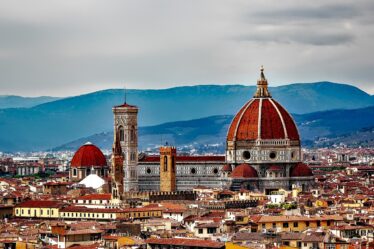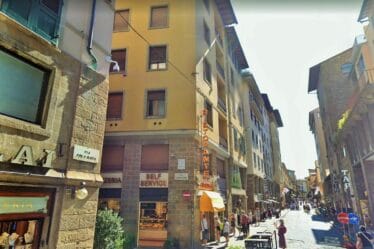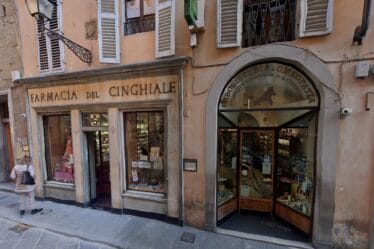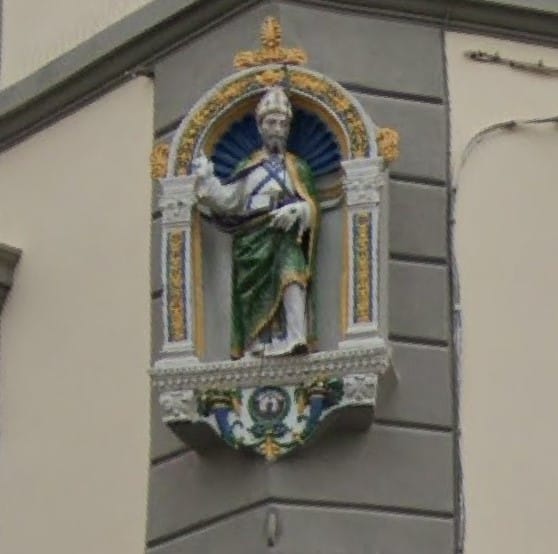
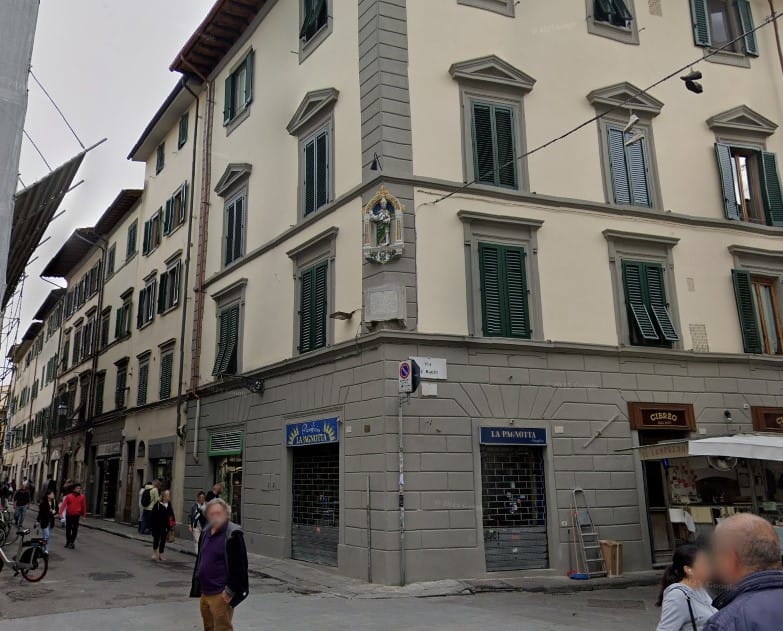
On the corner between Via de’ Macci and Borgo La Croce, the Sant’Ambrogio Blessing Tabernacle remains visible to all passersby. Created around 1525 by Giovanni della Robbia, it combines the elegance of glazed terracotta with a rich chromatic palette: deep blue, dark green, vibrant yellow, soft pink for the flesh tones, and pure white for the details.
A Work of Devotion and Color
In this remarkable piece, Saint Ambrose is depicted in the act of blessing. According to a local tradition, the saint himself once walked through this very area, accompanied by Bishop Saint Zanobi. The Sant’Ambrogio Blessing Tabernacle was erected precisely to commemorate that sacred passage. On the pedestal, a Latin inscription invites those who stop before it to prayer and recalls the apostolic blessing.
The Red City Symbol
At the base, the “gocciola” (drop-shaped detail) features a small red fortress, a symbol of the “Signoria del Gran Monarca della Città Rossa.” This was one of the ancient Florentine popular institutions, active until at least the sixteenth century. The name “Città Rossa” (Red City) referred to the Mattonaia neighborhood, renowned for its brick production. This unique historical element adds depth and identity to the Sant’Ambrogio Blessing Tabernacle.
Echoes Across the Church Facade
Other traces of this emblem can still be seen on the opposite facade of the Church of Sant’Ambrogio. Two stone plaques from 1577 bear the same symbol and the same designation. Despite being located on a simple street corner, the Sant’Ambrogio Blessing Tabernacle preserves a fascinating link between religion, popular tradition, and Florence’s urban history.
A Treasure of Florence’s Streets
Walking through the streets of Florence often reveals hidden gems that connect past and present. The Sant’Ambrogio Blessing Tabernacle is one such treasure, offering an authentic glimpse into the city’s devotional and civic heritage.

